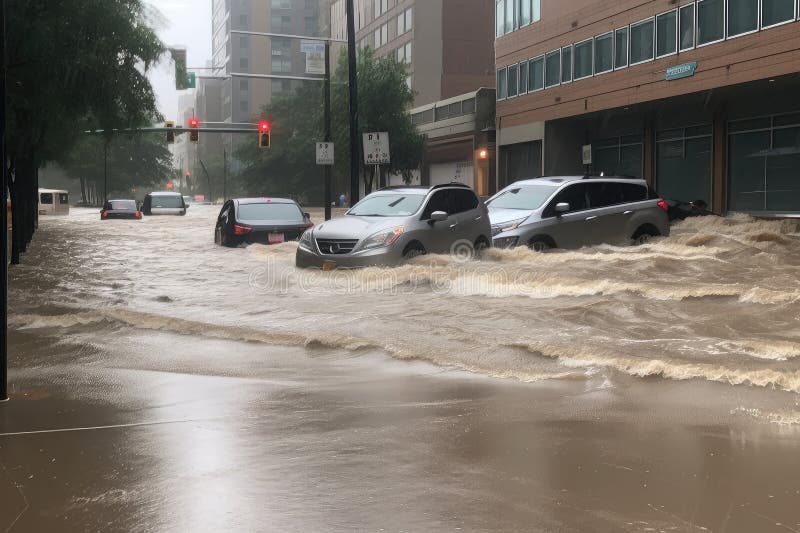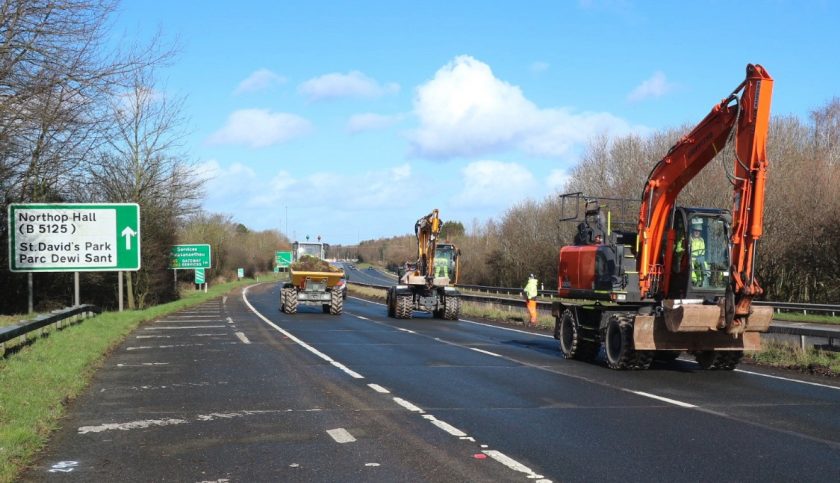Flash Flood Safety: Recognizing Warnings And Implementing Protective Measures

Table of Contents
Recognizing Flash Flood Warnings
Recognizing the signs of an impending flash flood is the first step towards ensuring your safety. This involves understanding official warnings and also learning to identify natural indicators.
Official Warnings and Alerts
Meteorological agencies issue various warnings to alert the public about potential flash floods. Understanding the difference between these alerts is critical:
- Flash Flood Watch: Conditions are favorable for flash flooding. Stay informed and be prepared to take action.
- Flash Flood Warning: Flash flooding is occurring or is imminent. Take immediate action to protect yourself and your property.
- Flash Flood Emergency: A particularly dangerous and life-threatening flash flood is happening. Immediate action is required.
These warnings are disseminated through various channels:
- NOAA Weather Radio: A dedicated weather radio is the most reliable source for timely alerts.
- Mobile Alert Systems: Many smartphones receive emergency alerts through their built-in systems (check your settings).
- Local News: Television and radio broadcasts provide updates and critical information during flash flood events.
- Weather Apps: Numerous weather apps (e.g., AccuWeather, The Weather Channel) provide real-time alerts and forecasts.
Example warning phrasing: Look for phrases like "Flash Flood Warning issued," "Life-threatening flash flooding," or "Rapidly rising water."
Natural Indicators of Impending Flash Floods
While official warnings are crucial, recognizing natural indicators can provide early warning. Be vigilant for:
- Rapidly rising water levels: A sudden, significant increase in water levels in streams, rivers, or normally dry washes is a major warning sign.
- The roar of approaching water: The sound of rushing water signifies a potential flash flood moving downstream.
- Sudden changes in water color: Muddy or unusually discolored water indicates increased sediment runoff, often a precursor to flooding.
- Unusual debris in the water: Logs, branches, and other debris carried by rapidly flowing water are clear signs of increased water volume.
Remember, staying aware of your surroundings, especially during periods of heavy rainfall or thunderstorms, is paramount for flash flood safety.
Implementing Protective Measures Before a Flash Flood
Preparation is key to minimizing the risk and damage from flash floods. Proactive measures significantly improve your chances of staying safe.
Creating a Family Emergency Plan
A well-defined family emergency plan is crucial for flash flood preparedness. This plan should include:
- Designated meeting place: Establish a safe location outside your home where family members can meet in case of evacuation.
- Communication strategy: Determine how family members will contact each other if separated (e.g., pre-arranged phone numbers, text messages).
- Evacuation routes: Identify multiple evacuation routes from your home and alternate transportation options (e.g., a friend's house outside the flood zone).
Emergency Kit Essentials:
- Water: One gallon per person per day for at least three days.
- Food: Non-perishable items for at least three days.
- First-aid kit: Including essential medications.
- Important documents: Copies of insurance policies, identification, and other vital papers in a waterproof container.
Protecting Your Property
Protecting your property involves taking steps to minimize flood damage:
- Move valuables to higher ground: Relocate furniture, appliances, and important documents to upper floors.
- Secure outdoor furniture and equipment: Bring loose objects inside to prevent them from being swept away.
- Protect your basement or ground floor: Use sandbags or waterproof barriers to protect against rising water.
Specific Actions Based on Structure:
- Houses: Elevate electrical appliances and move essential belongings to upper floors.
- Apartments: Follow your building's emergency procedures and contact management for assistance.
Actions to Take During a Flash Flood
During a flash flood, swift action is paramount. Your safety is the top priority.
Evacuation and Seeking Shelter
If instructed by authorities, evacuate immediately.
- Never drive through floodwaters: Even seemingly shallow water can sweep away vehicles.
- Seek shelter on higher ground: If evacuation is impossible, move to the highest level of your home or to a designated shelter.
Evacuation Safety Tips:
- Stay informed: Monitor news reports and official warnings.
- Assist neighbors: Offer help to those who may need assistance evacuating.
- Avoid downed power lines: These pose a serious electrical hazard.
Staying Safe in Your Home
If you're trapped in your home:
- Move to the highest level: Get to the uppermost floor or roof if necessary.
- Turn off utilities: If it's safe to do so, turn off gas and electricity to prevent further hazards.
- Monitor water levels and news updates: Stay informed about the flood's progression.
If Trapped:
- Call for help: Contact emergency services immediately.
- Stay visible: Signal for help if possible (e.g., waving a brightly colored cloth).
Post-Flash Flood Safety Procedures
After the floodwaters recede, there are still crucial safety measures to take.
Assessing Damage and Reporting
Once the immediate danger has passed:
- Assess structural damage: Carefully check your home for damage to walls, foundations, and roofs.
- Report damage: Contact your insurance company and local authorities to report damages.
- Avoid contact with floodwaters: Floodwaters are often contaminated and can pose health risks.
Post-Flood Assistance:
- Contact FEMA (Federal Emergency Management Agency) or other disaster relief organizations for assistance.
Cleaning and Sanitation
Cleaning and sanitation after a flash flood is crucial to prevent health hazards:
- Properly clean and disinfect your home: Use appropriate cleaning solutions to remove mud, debris, and contaminants.
- Handle contaminated materials safely: Wear protective gear (gloves, masks) when handling flood-damaged materials.
- Dispose of damaged items appropriately: Follow local guidelines for waste disposal of contaminated items.
Preventing Mold Growth:
- Dry out your home thoroughly: Use fans and dehumidifiers to remove excess moisture.
Conclusion:
Flash flood safety is a critical aspect of preparedness. Recognizing flash flood warnings, implementing preventative measures, and taking appropriate actions during and after a flash flood are all crucial for ensuring your safety and the safety of your loved ones. Developing a comprehensive flash flood preparedness plan, including an emergency kit and evacuation strategy, is vital. Share this information with your family, friends, and community to promote wider awareness of flash flood prevention and response. By understanding flash flood safety and taking proactive steps, you can significantly reduce your risk and protect yourself from this dangerous natural event.

Featured Posts
-
 M62 Westbound Resurfacing Manchester To Warrington Road Closure
May 25, 2025
M62 Westbound Resurfacing Manchester To Warrington Road Closure
May 25, 2025 -
 Escape To The Country Top Locations For A Tranquil Lifestyle
May 25, 2025
Escape To The Country Top Locations For A Tranquil Lifestyle
May 25, 2025 -
 Your Escape To The Country Financial Considerations And Planning
May 25, 2025
Your Escape To The Country Financial Considerations And Planning
May 25, 2025 -
 Russell And The Typhoons Discography Tours And Notable Performances
May 25, 2025
Russell And The Typhoons Discography Tours And Notable Performances
May 25, 2025 -
 Zheng Qinwens Semifinal Showing At The Italian Open
May 25, 2025
Zheng Qinwens Semifinal Showing At The Italian Open
May 25, 2025
Latest Posts
-
 Rising Tennis Culture In China Impact Of Top International Players
May 25, 2025
Rising Tennis Culture In China Impact Of Top International Players
May 25, 2025 -
 I Mercedes Kai I Pithanotita Apoktisis Toy Verstappen
May 25, 2025
I Mercedes Kai I Pithanotita Apoktisis Toy Verstappen
May 25, 2025 -
 Chinas Tennis Culture Boosted By Top Players Italian Open Director
May 25, 2025
Chinas Tennis Culture Boosted By Top Players Italian Open Director
May 25, 2025 -
 Analyzing George Russells Game Changing Decision For Mercedes
May 25, 2025
Analyzing George Russells Game Changing Decision For Mercedes
May 25, 2025 -
 I Mercedes Apomakrynetai Apo Ton Verstappen
May 25, 2025
I Mercedes Apomakrynetai Apo Ton Verstappen
May 25, 2025
